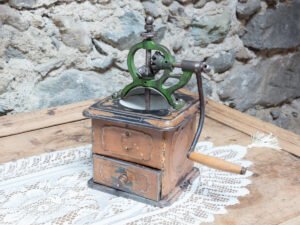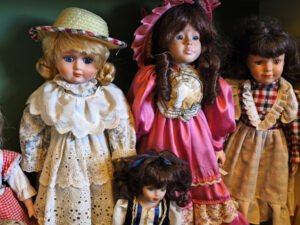We all identify popular brands with their logos, right? But, if a brand has around ten different logos, things will get confusing. This is the biggest challenge collectors face while identifying old Bassano Pottery!
Bassano pottery has many marks, like brand logos, factory, and artist marks, each with a different script and design. That’s why it often gets difficult for collectors to understand them and identify the REAL, branded Bassano pottery from the lot!
This guide will help you understand all the important markings and signs to identify a valuable vintage Bassano piece. From company logos and material marks to location marks, learn everything about spotting the real deal Bassano pottery!
Key Takeaways
- Authentic Bassano pottery marks aren’t flat; they have overlapping, uneven strokes and blurred, raised edges with die marks.
- Old & Authentic Bassano Pottery has an embossed or etched trademark, either the brand’s name or a location mark on its base or lid.
- Vintage Bassano Pottery has four types of material marks for glazed clay, underglaze clay, maiolica, and ceramics next to the brand marks on the base.
- Old Bassano pottery sells for $20 – 500, with higher values, over $8,000 for large, artist-signed models.
History & Evolution of Bassano Pottery
Vintage Bassano ceramic is a high-quality white clay, quartz, and feldspar pottery from Bassano del Grappa, Nove, Italy. Initially, this pottery was sun-baked, but with time, makers switched to new kiln-firing and design techniques, leading to the following history:
- 17th Century (1600s): Giuseppe & Antonio Bassano started making functional bowls, pitchers, and plates from their locally mixed ceramic & blue and yellow glazes.
- 18th Century: The Remondini family introduced Bassano maiolica – a thick, floral pottery with hand-painted or stenciled designs, figurines, and bold glazes.
- 19th Century: Bassano potters shifted to European aristocratic tiles, figurines, colorful landscapes, and designs. They even formed a local Bassano potter union, which, at its peak, had 500 artisans and over 50,000 Bassano products!
Today, Bassano has moved to contemporary, polychrome porcelain pottery but is made by many workshops, of which the Bassano Ceramiche, Dal Pra, and Zortea form a majority!
How to Identify & Date Vintage Bassano Ceramics
You can identify old Bassano pottery by the die-cast, slightly raised brand logos and material, factory, mold, and artist marks on its base.
Let’s study all those marks and their stamping dates in detail:
1. Bassano Pottery Marks & Stamps
One of the most prominent and easy-to-spot features of old Bassano Pottery is its marks on the base or lid. This mark can either be a logo or a trademark.
Now, the authentic marks won’t be clear; they’ll have some overlapping, uneven strokes or hand-stamp marks with blurry edges. I’ve also noticed that most use blue, green, red, and brown glazes with a die-cast or rubber edge for a glazed look.
Besides, these marks evolved over the years. For instance, the earliest Bassano ceramics from the 1700s used a simple ‘B’ mark, while the 1960s models used a complete brand and location mark, making it a vital dating factor!
I’ve hand-drawn the nine most popular Bassano Pottery marks with their active years for your reference:
| Vintage Bassano Pottery Marks | Manufacturing Years | Bassano Ceramics Age |
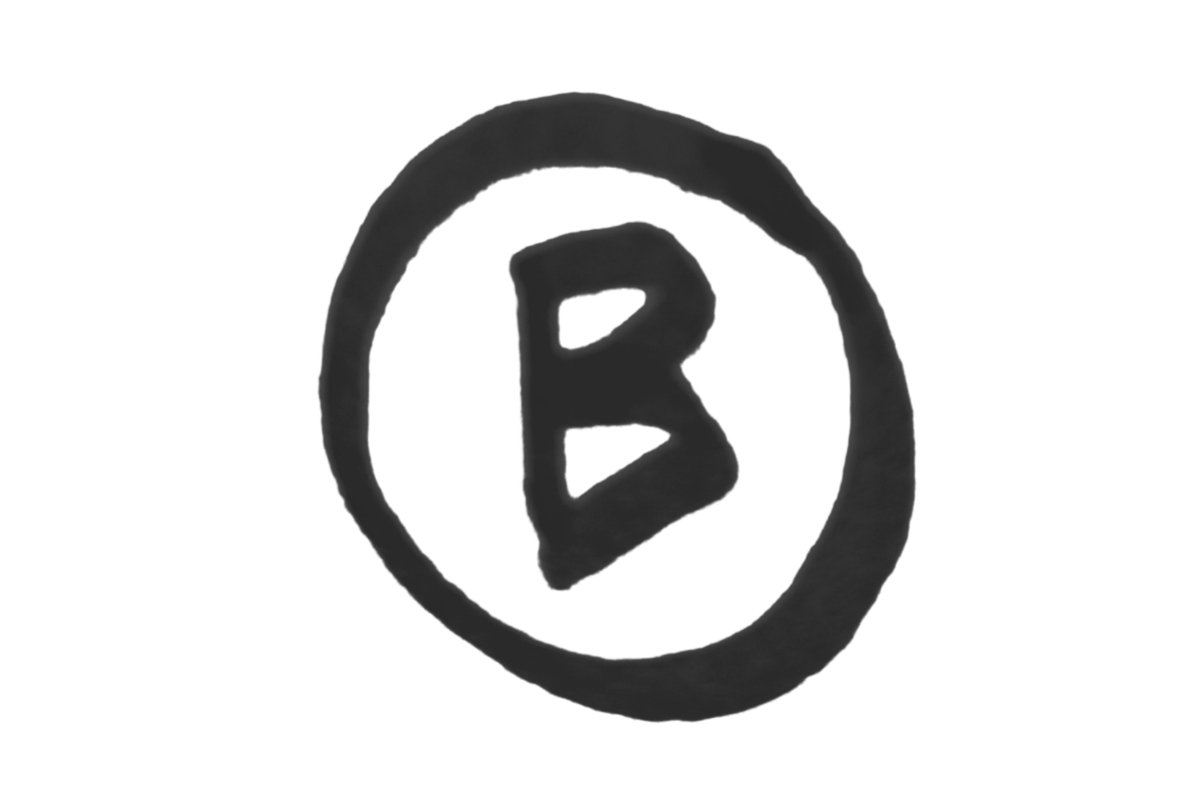 | Early 1700s | 224 – 323 years |
 | 1800s – 1900s | 123 – 223 years |
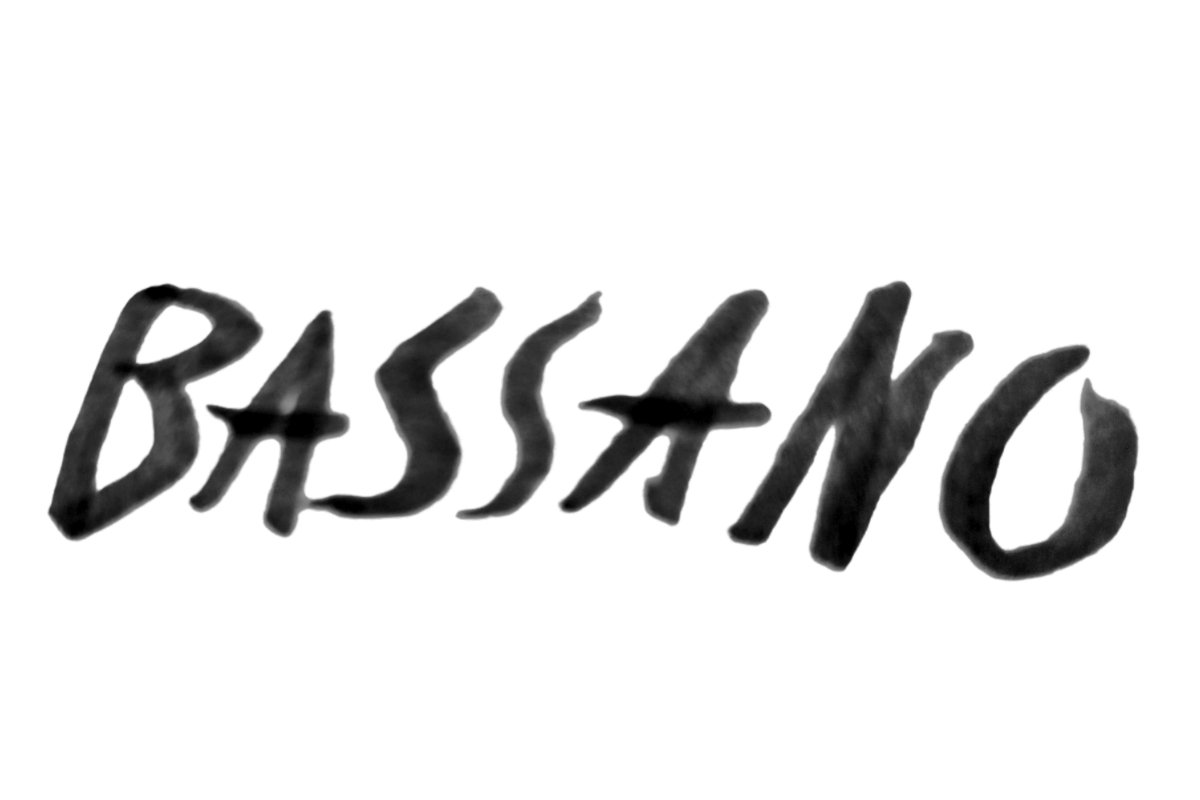 | 1920 – 1930 | 93 – 103 years |
 | 1950 & Onwards | Over 70 years |
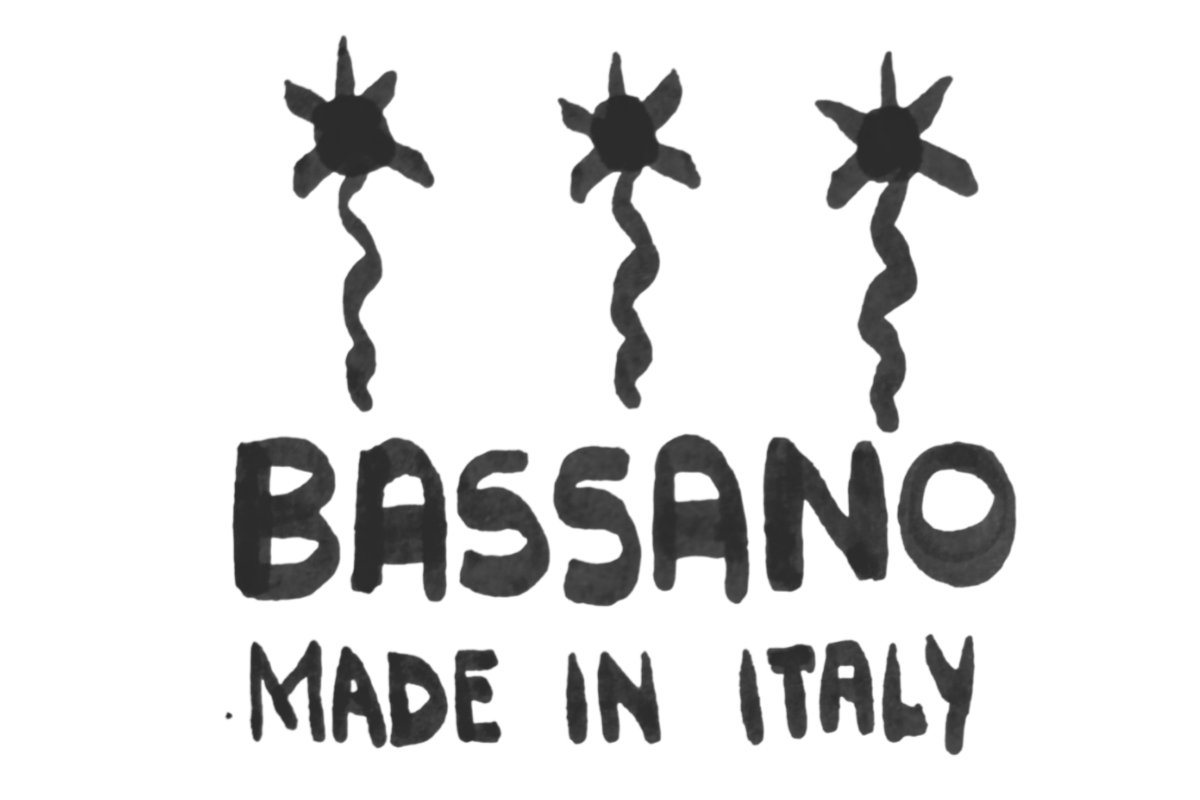 | 1960 – 1970 | 53 – 63 years |
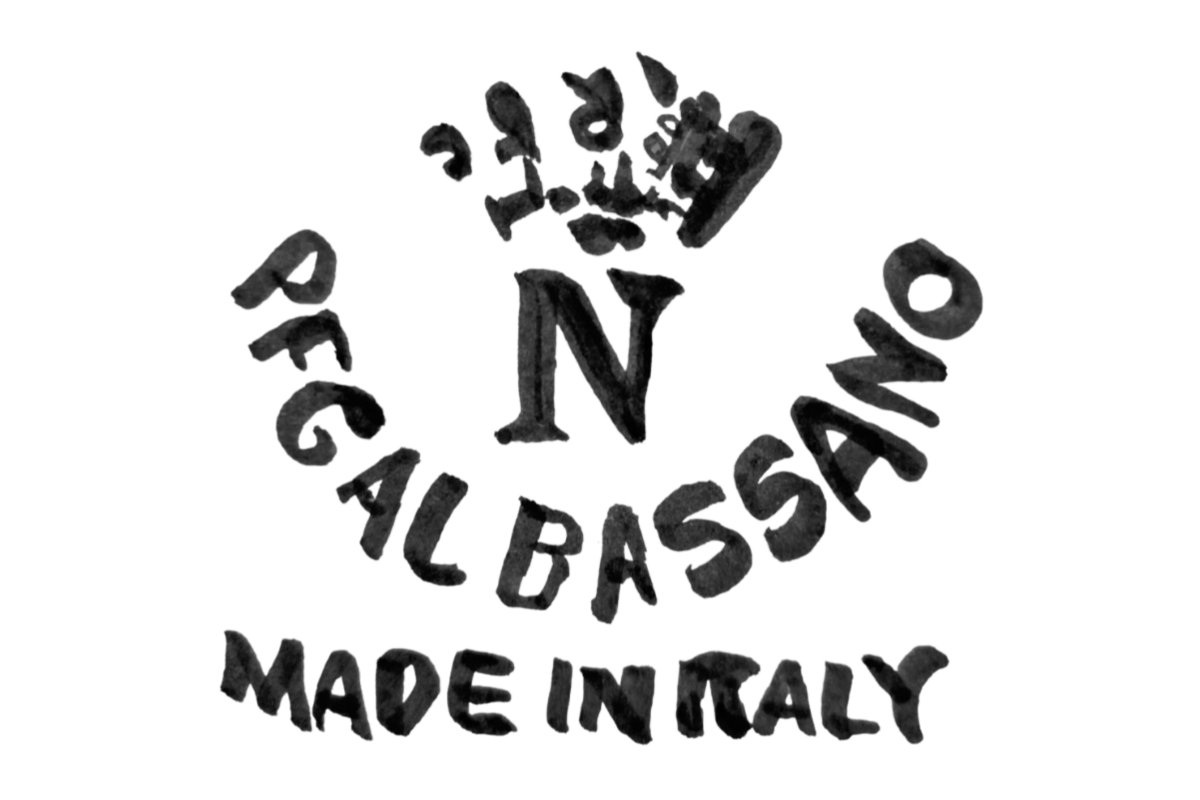 | 1972 – 1995 (Embossed Logo) | 20 – 50 years |
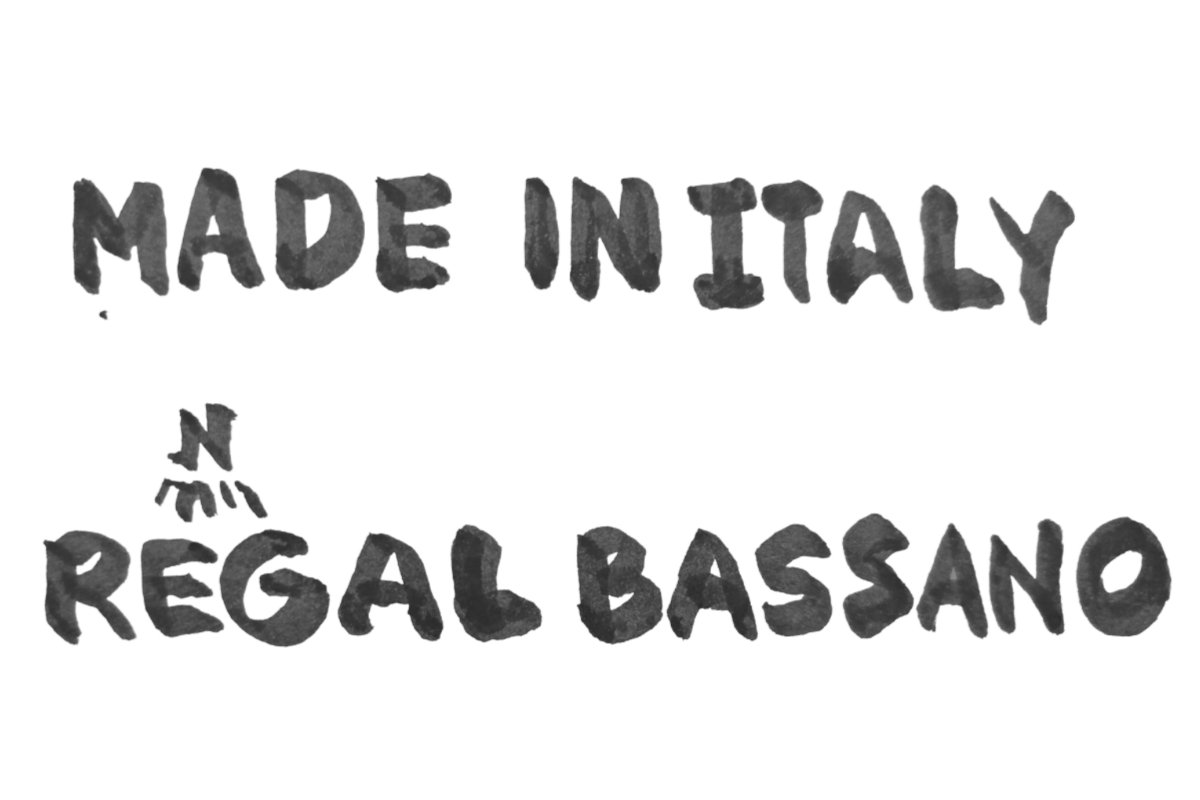 | 1980 & Onwards | Around 40 years |
 | 1995 & Onwards (Printed Logo) | Over 20 years |
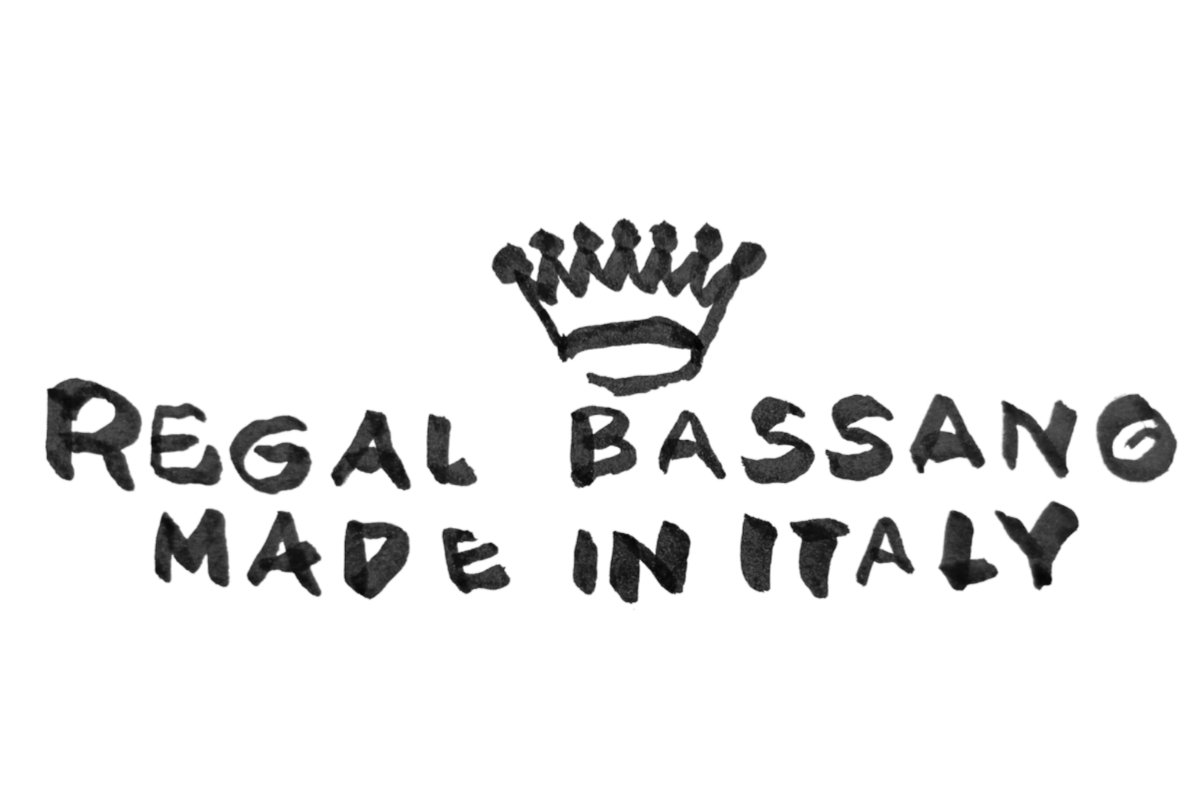 | 1995 & Onwards | Around 20 years |
But if you aren’t able to read your Bassano pottery’s mark clearly, the following year-wise features may help you in identifying and dating it:
- 1700 – 1800s: Inspired by the on-trend Rococo movement, Bassano made simple, white clay floral designs with red, yellow, and green glazes & hand-stamped marks. Popular products from the era include plates, vases, and pitchers worth over $6,000.
- 1820s: Bassano potters shifted to maiolica – white, glossy pottery with a brown tin glaze for different wall hangings, inkwells, tureens & scent bottle collections.
- 1850s: The brand introduced neoclassical pottery – high contrast, black and white pottery with die-stamped, elaborate hangings, scent bottles, and tea set designs.
- 1900s: You can identify these early 20th-century figurines, centerpieces, and souvenirs by their bright, modern designs, transfer-stamped logos, and porcelain or stone accents. Usually, these sleek, decorative models cost up to $1,500 today!
Avoid using harsh or abrasive cleaners with old Bassano products, which may stain the marks and make them unreadable.
2. Maker Marks
Apart from the brand marks, I’ve often found Italian ceramic artist signatures on the bases or sides of some of the earliest Bassano pieces from the 1800s—1900s.
Most are transfer-stamped (printed), but a few rare, limited-edition ones might have embossed signs. Here, I have replicated some of the signatures just for identification.
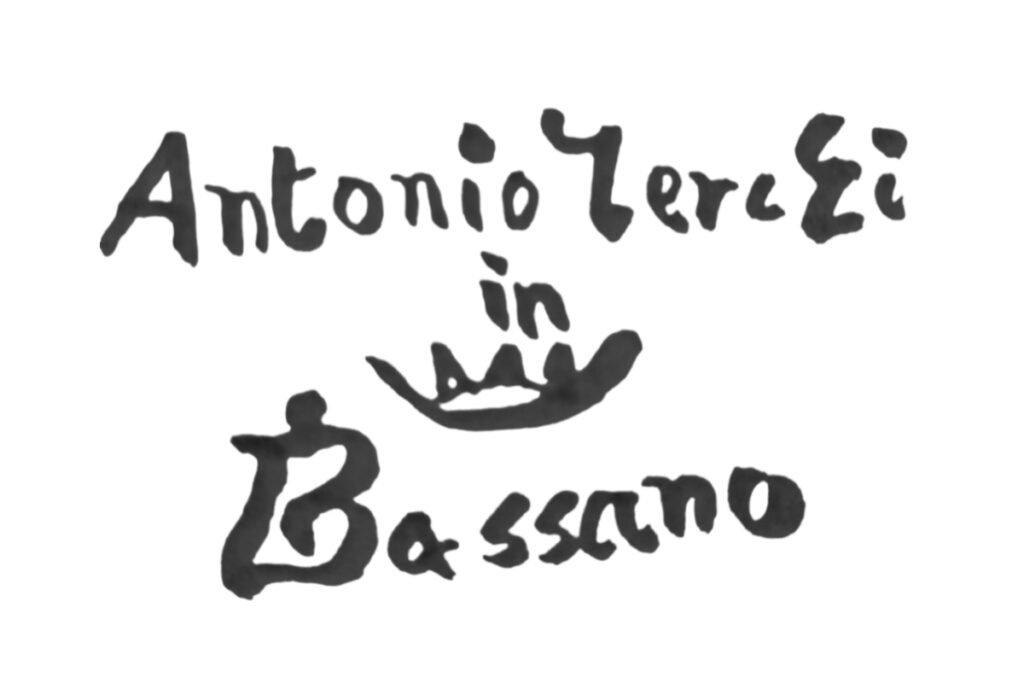

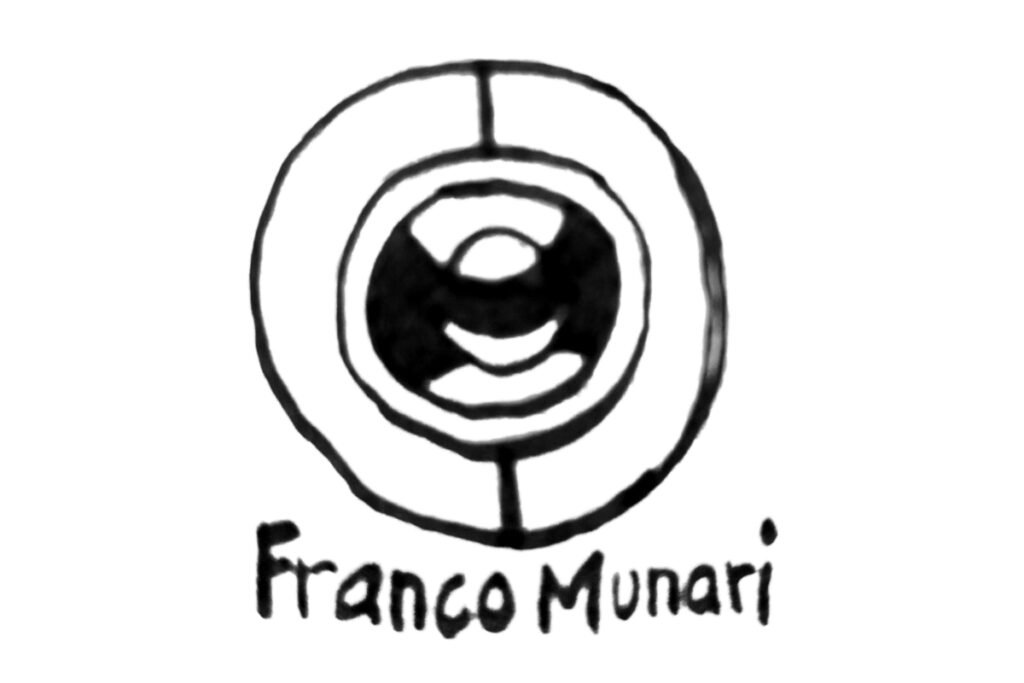





In contrast, post-1900s molded porcelain or factory-clay figurines have a stamped factory mark, indicating their plant name, quality & workshop location. Here are some of those:
| Vintage Bassano Pottery Factory Marks | Bassano Pottery Workshop Name |
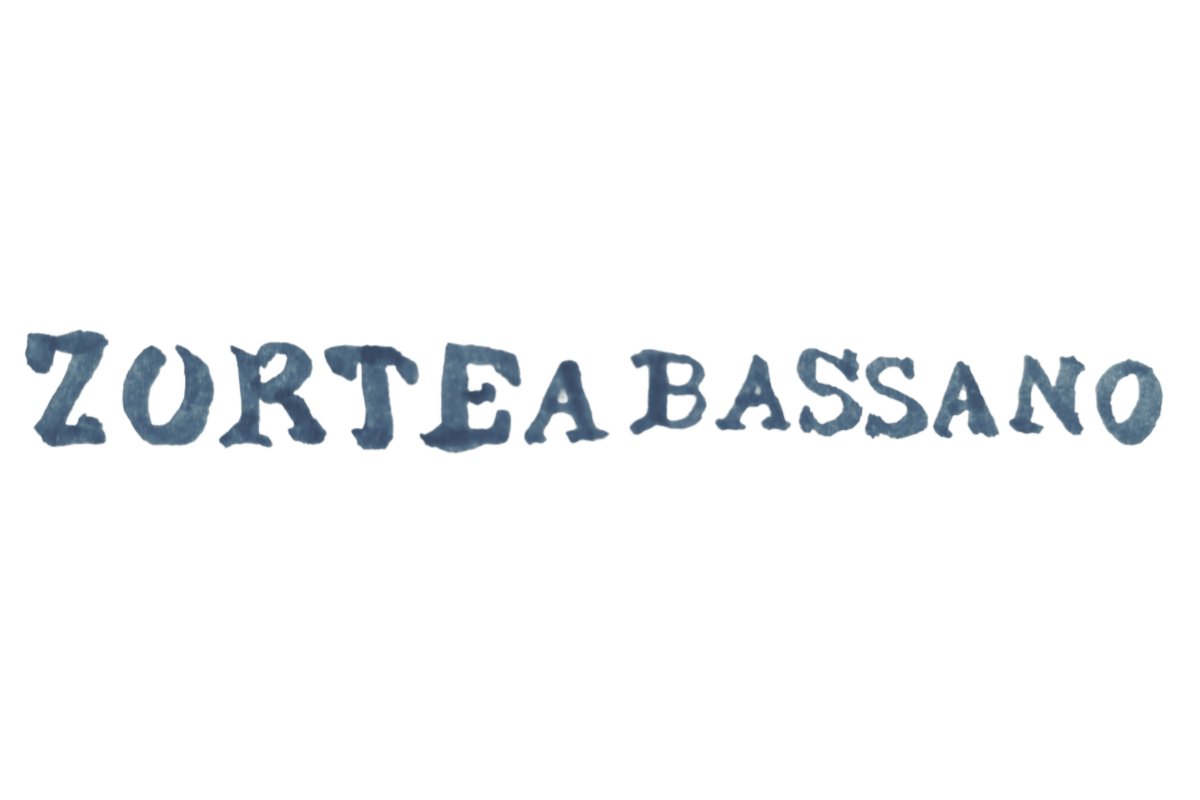 | Luigi Zortea Workshop |
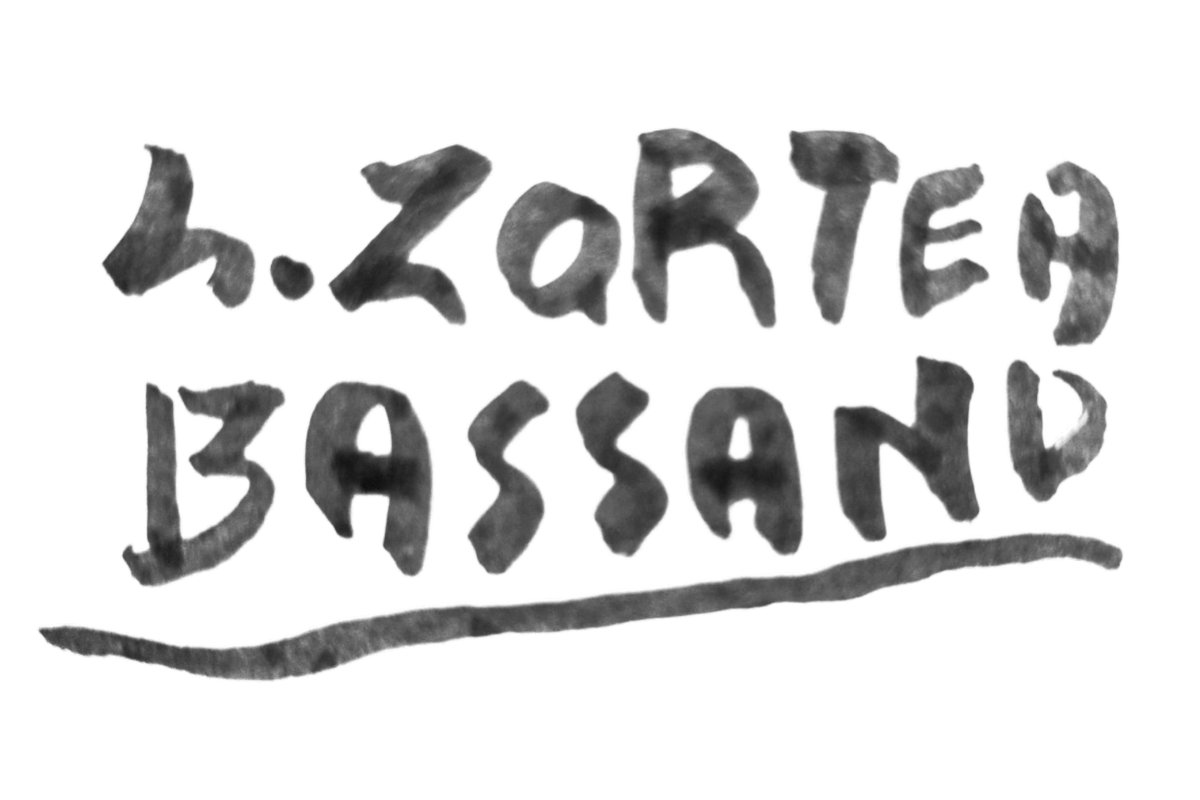 | Luigi Zortea Workshop |
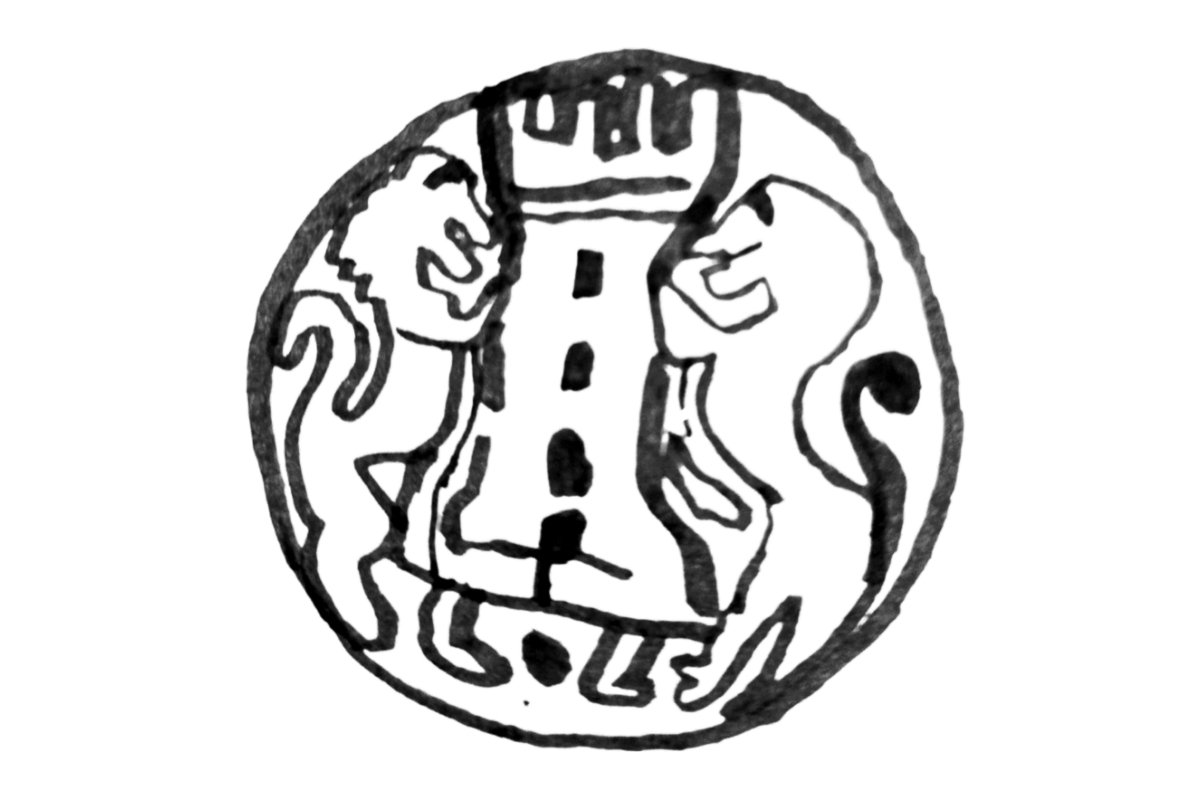 | Luigi Zortea Workshop |
 | Gottingherr Collections |
 | Bassano di Nove |
 | Manardi Workshop |
 | Simone Marioni Workshop |
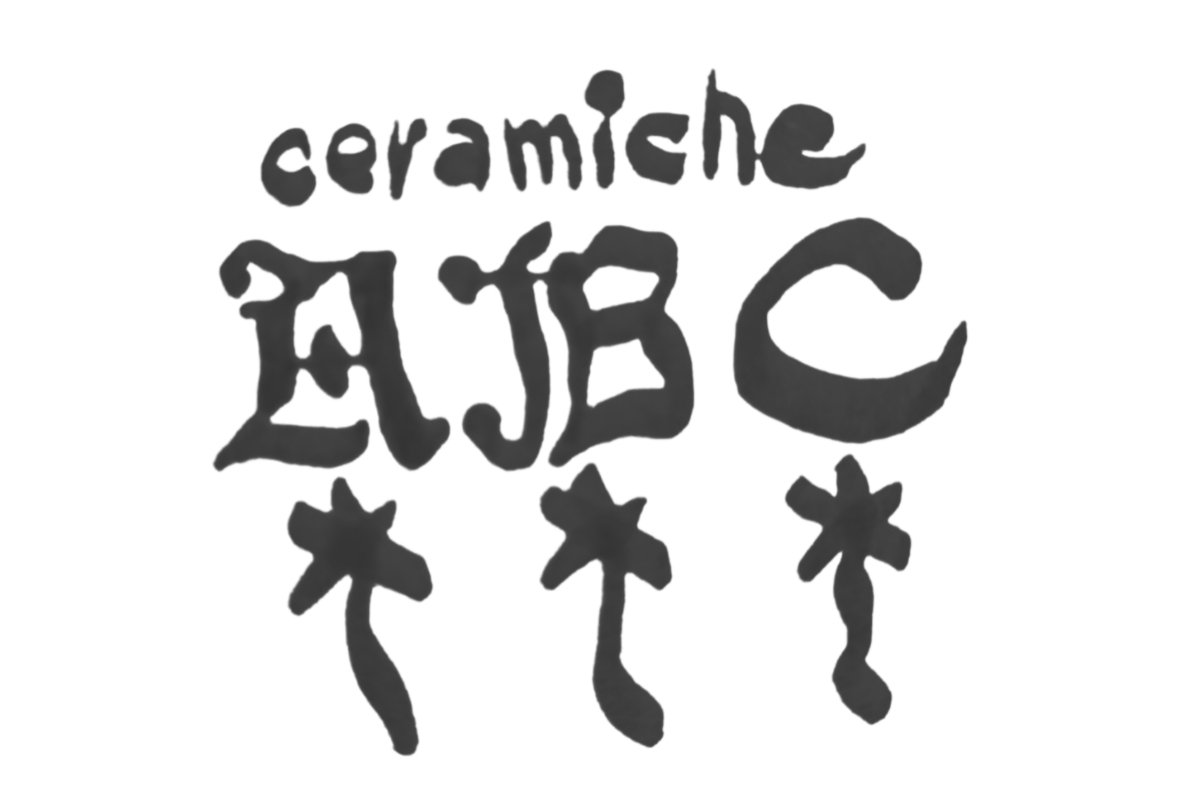 | Ceramiche ABC |
All the above factory marks are hand-drawn, referring to verified Bassano products, only for quick identification reference.
3. Pottery Materials & Material Marks
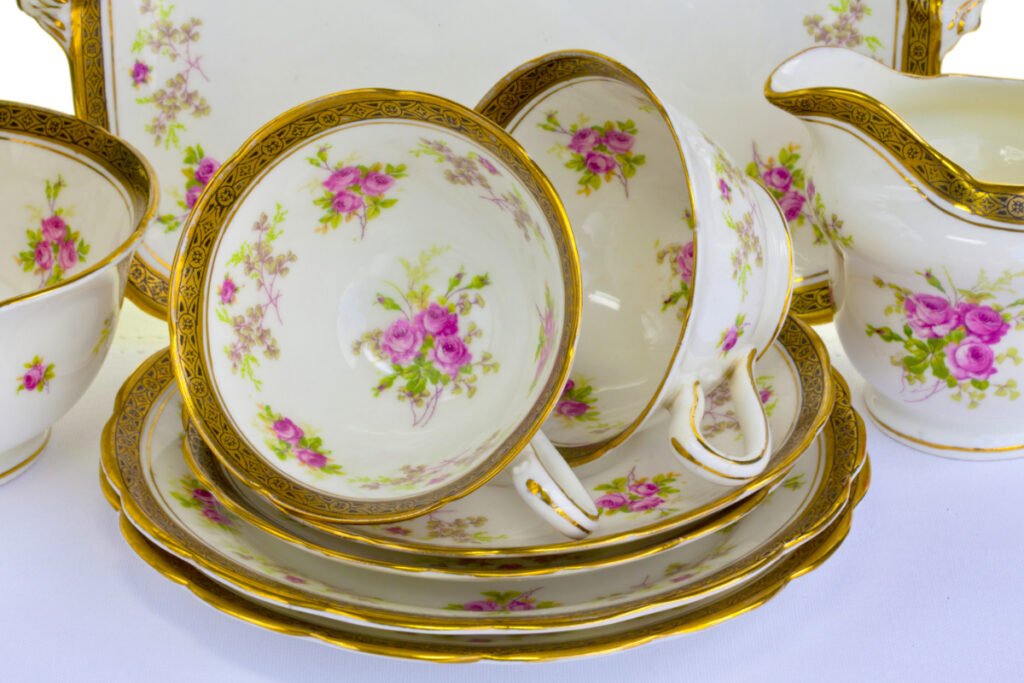
You can spot any 1900s – 1960s Bassano pottery by its polished, white clay, maiolica, or porcelain sides and bulbous or spherical shapes. Besides, they might use synthetic, over-glazed paints with etched gold and silver leaf designs on either side.
Besides, I always find an embossed material mark on all old Bassano models, along with the brand mark on the base. I created a compiled, hand-drawn reference list of such marks below:
| Vintage Bassano Pottery Materials | Featured Marks |
| Bassano Ceramica | 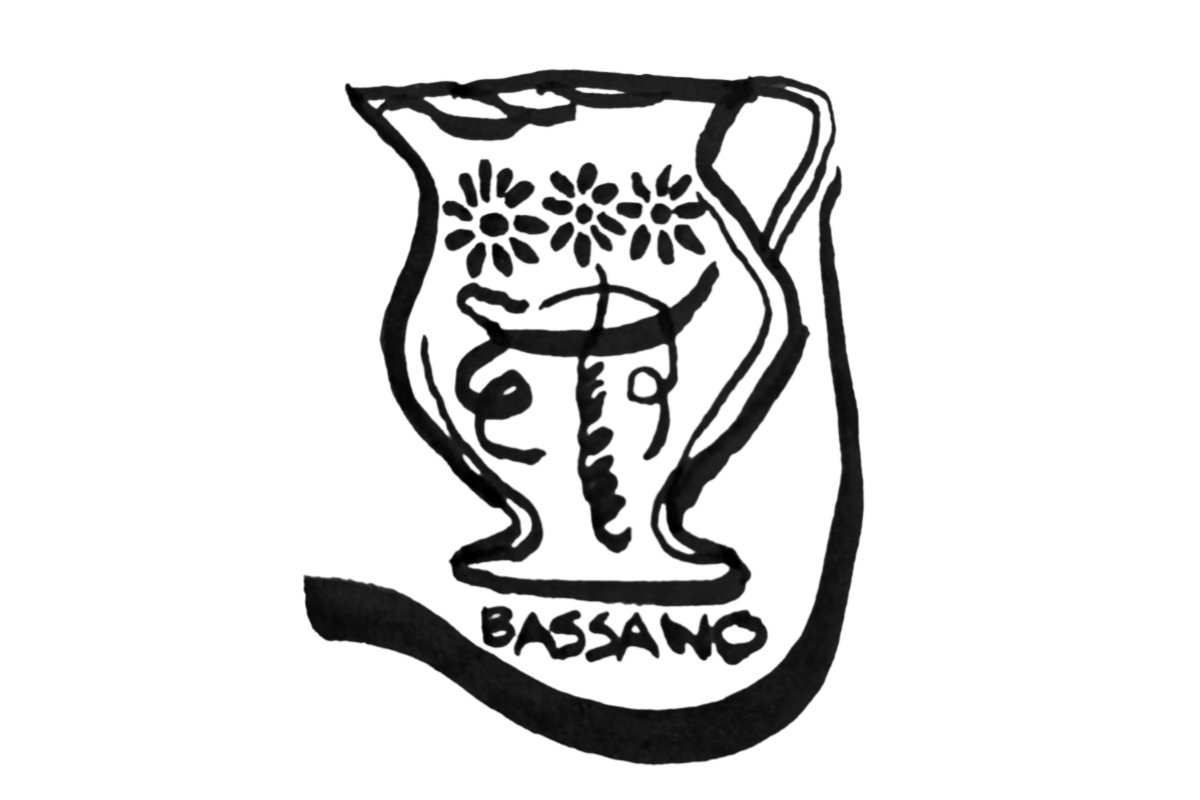 |
| Underglazed Raw Clay (1970s) |  |
| Glazed Raw Clay (1999 & Onwards) | 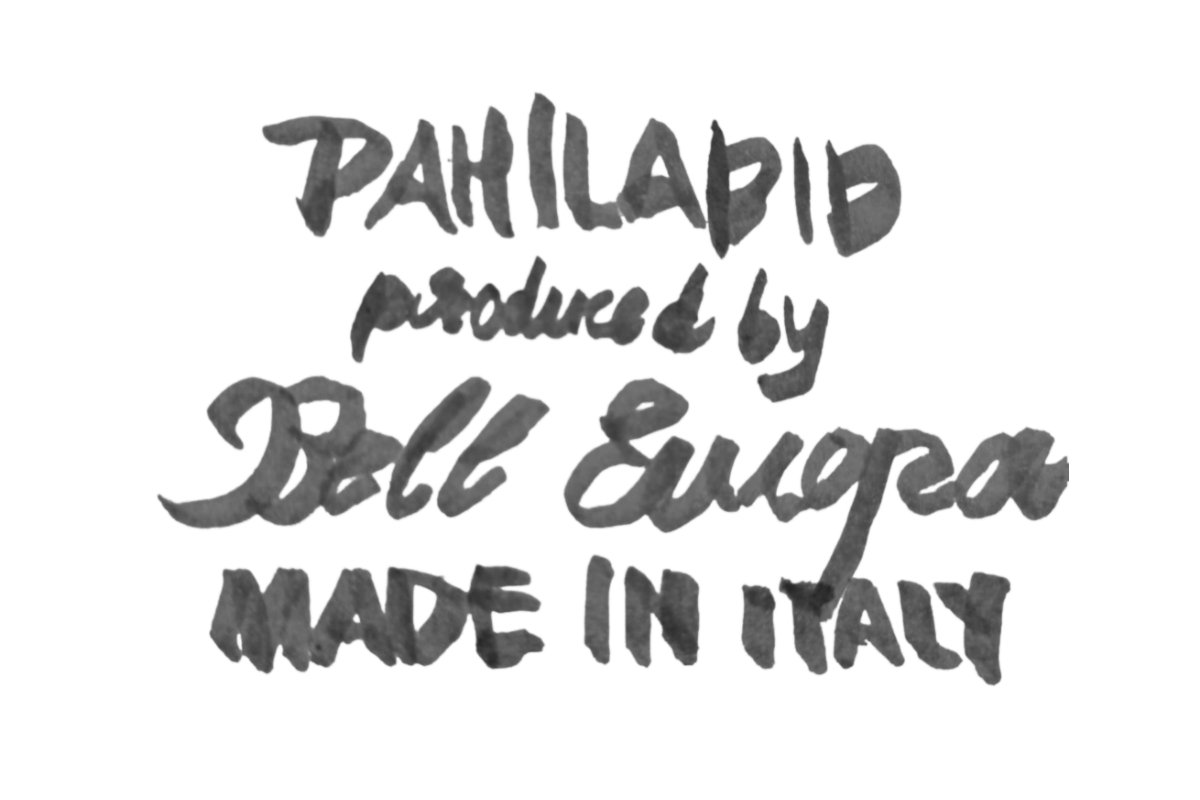 |
| Maiolica | 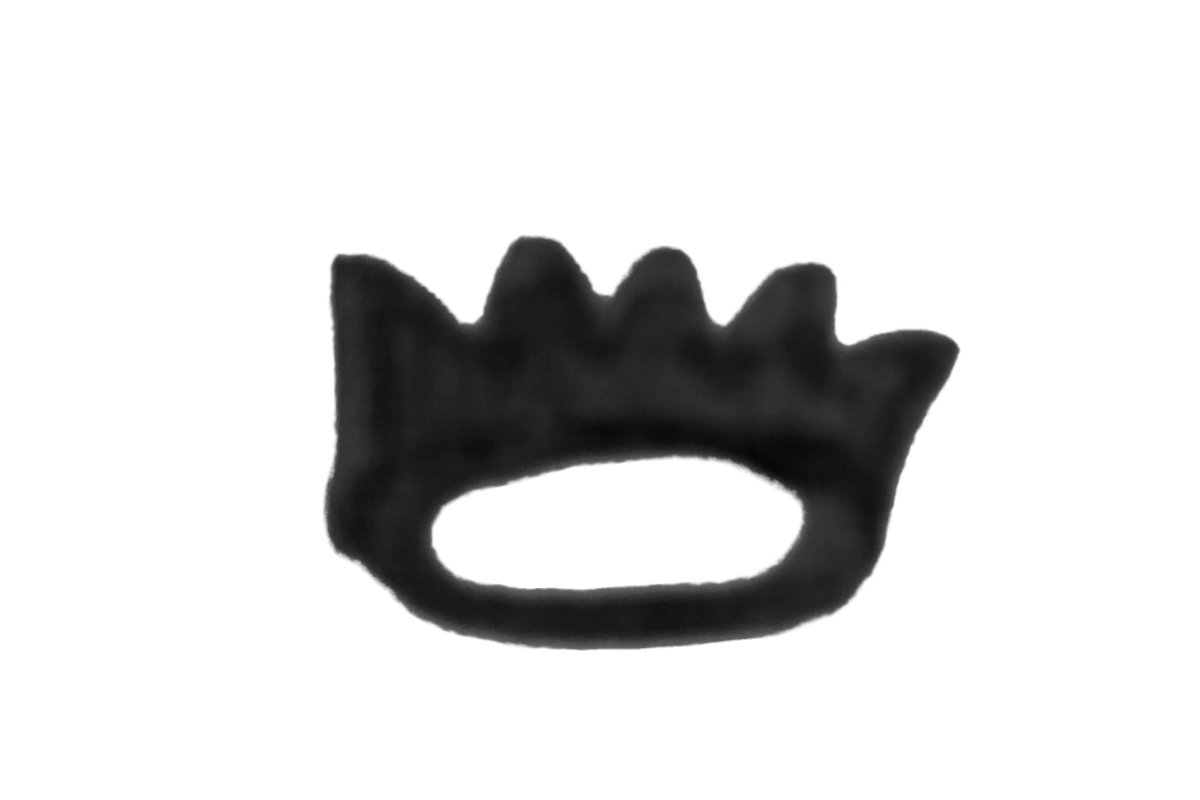 |
But forged Bassano Pottery has no material marks and painted motifs. Instead, it might have some polished stoneware or plastic accents on either side.
4. Mold & Tally Marks
Apart from the different pottery marks & local Italian ceramic artist signatures, old Bassano pottery has embossed mold numbers, either on the base or the walls. While there is no such mold mark guide, most of the collectible ones, I believe, fall between 400 – 2000.
Besides, some 1700s Bassano lots might have tally marks, usually indicating the artisan’s number and designation on the base.
For example, an old Bassano vase with a four-tally mark indicates that the youngest artisan made it. So remember, the fewer the tally marks, the more detailed and valuable the pottery!
How to Spot Fake Bassano Pottery: Marks & Features

With so many forged Bassano pottery models circulating in the market, finding the old and authentic ones can be confusing, right?
Well, not anymore! Here’s an easy, fool-proof features list that will help you identify the REAL & VALUABLE Bassano pottery models quickly:
- Original white clay (kaolin), porcelain, or maiolica sides with thin, tin glazing
- Hand-painted mythology, natural, Art Nouveau, and geometric designs
- Coarse, handcrafted texture with bumps, pits & other irregularities
- Slightly raised & die-cast marks
- Heavy; weighing over 200 – 800 grams
Vintage Bassano Pottery Value Guide
Like other antiques, old Bassano pottery’s value depends on its condition, packaging, and artist signs. Most common Bassano Italy pieces sell for $20 – $400, just like this tureen and platter pair that sold for $400 on eBay!
On the contrary, rare Bassano pieces might fetch more, even up to $8,000 for designer and limited-edition models. Some popular examples include the Bassano Ceramic Cherubs, Italian Hippo, Art Nouveau Jug, etc., which are worth $1,500 – $8,000 today!
Obviously, Bassano Pottery’s value changes with its types: large figurines and jardinieres cost much more than small plates, bowls, jugs, etc.
Below is a handy Bassano Pottery price chart for better clarity:
| Old Bassano Pottery Products | Estimated Price (Common Collectibles) | Estimated Price (Designer Collectibles) |
| Plates & Platters | $10 – 350 | Up to $700 |
| Fruit & Soup Bowls | $10 – 250 | N.A |
| Statues & Figurines | $80 – 500 | $ 1,700 – 3,000 |
| Centerpieces | $300 – 1,500 | $6,000 – 10,000 |
| Vases | $50 – 400 | Around $3,000 |
As we saw, you can spot, identify, and appraise old Bassano pottery based on the small, embossed, or etched marks on its base. All you need is a keen eye to read the letters and location marks and this detailed marks guide to compare them later!
And if you want more brand-specific mark guides for other imported old Gzhel and Frankoma pottery artifacts, hop on to my other guides!



